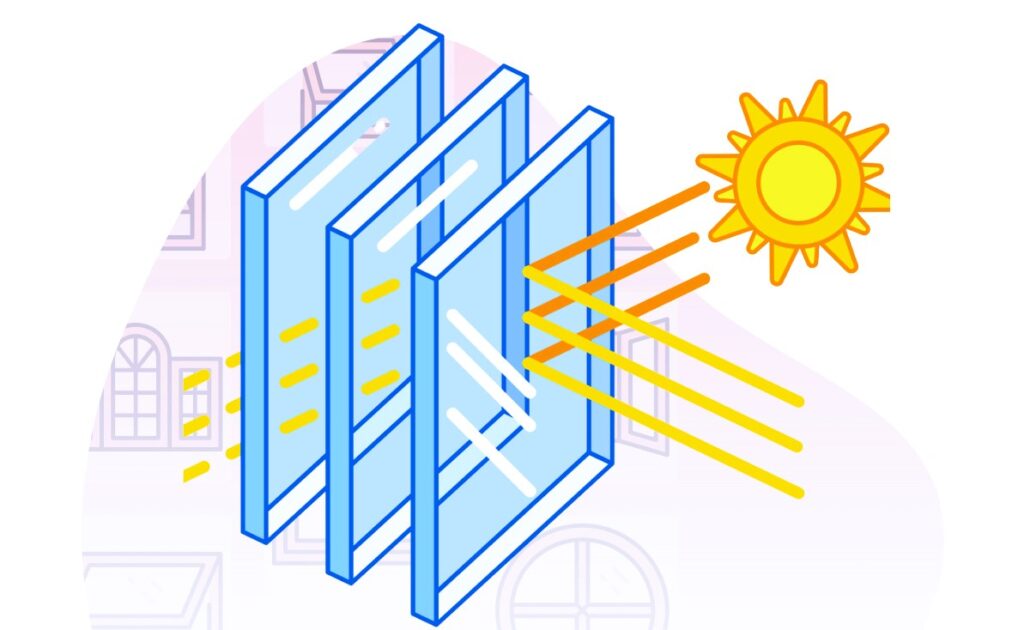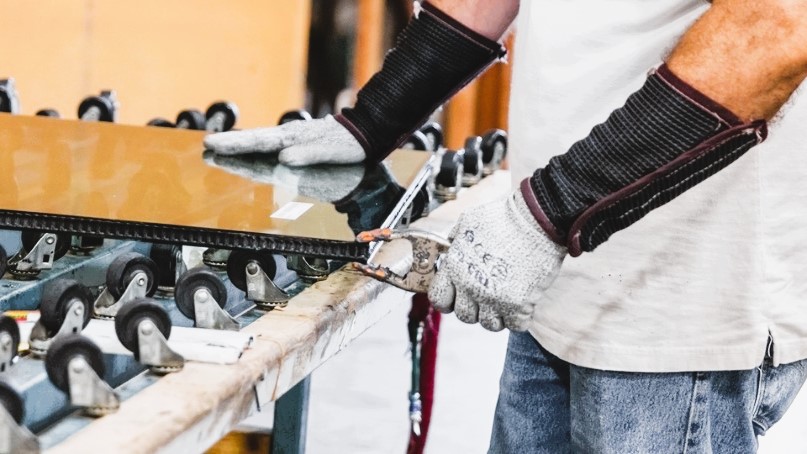Windows play a crucial role in the energy efficiency of a home. They provide natural light, ventilation, and views, but they can also be a significant source of heat gain or loss. To address this issue, low-emissivity (Low-E) coatings have emerged as an effective solution for improving window energy efficiency. In this article, we will explore the role of Low-E coatings in window performance, how they work, and the benefits they offer in terms of energy efficiency. Understanding the significance of Low-E coatings can help homeowners in Calgary make informed decisions when selecting windows for their homes.
What are Low-E Coatings?
Low-E coatings are microscopically thin, virtually invisible metallic layers applied to the surface of window glass. “E” stands for emissivity, which refers to the ability of a material to radiate energy. Low-E coatings are designed to reduce the amount of infrared and ultraviolet (UV) radiation that can pass through the glass while still allowing visible light to transmit.
How Do Low-E Coatings Work?
Low-E coatings work by reflecting heat back to its source. They have the ability to reflect thermal radiation, both from inside and outside a home. In cold climates, Low-E coatings reflect indoor heat back into the room, reducing heat loss through the windows. In warm climates, they reflect outdoor heat back outside, minimizing heat gain through the windows. By controlling the transfer of heat, Low-E coatings help maintain a more stable indoor temperature and reduce the reliance on heating or cooling systems.

Types of Low-E Coatings
There are two main types of Low-E coatings: passive and solar control.
- Passive Low-E Coatings: Passive Low-E coatings are designed to improve insulation by reducing heat loss during winter months. They have a higher shading coefficient, meaning they allow more solar heat gain into the room. This helps maximize the benefits of natural light and solar heat gain during colder seasons.
- Solar Control Low-E Coatings: Solar control Low-E coatings are specifically formulated to minimize heat gain during summer months. They have a lower shading coefficient, which reduces the amount of solar heat entering the room. This helps keep the indoor space cooler and reduces the need for excessive air conditioning. Want to keep warm? Then read our article about the optimal choice of window frames.
Benefits of Low-E Coatings
The application of Low-E coatings to windows offers several benefits:
- Improved Energy Efficiency: Low-E coatings significantly reduce heat transfer through windows, making them an important component of energy-efficient homes. By minimizing heat loss during winter and heat gain during summer, Low-E coatings help to maintain a comfortable indoor environment while reducing the need for excessive heating or cooling. This, in turn, leads to lower energy consumption and reduced utility bills.
- Enhanced Comfort: Low-E coatings help create a more comfortable living environment by preventing drafts near windows and maintaining a more consistent indoor temperature. They reduce cold spots near windows during winter and minimize hot spots during summer, ensuring a more balanced and comfortable indoor climate throughout the year.
- Protection from UV Radiation: Low-E coatings are designed to block a significant amount of harmful UV radiation from entering the home. UV radiation can fade furniture, flooring, and fabrics over time. By reducing the transmission of UV rays, Low-E coatings help protect interior furnishings from sun damage, preserving their appearance and longevity.
To learn more about window energy efficiency standards and regulations in Canada, you can refer to the official website of the Government of Canada on energy efficiency: Canada.ca.
- Improved Glare Reduction: Low-E coatings also help reduce glare by minimizing the amount of visible light transmission. This is particularly beneficial for rooms with direct sunlight exposure or where screens and monitors are used. By reducing glare, Low-E coatings create a morecomfortable and visually pleasing indoor environment.
- Condensation Control: Low-E coatings can also help control condensation on windows. They help to keep the interior surface of the glass warmer, reducing the likelihood of condensation forming on the windowpane. This helps prevent moisture-related issues such as mold growth and damage to window frames or surrounding areas.
Considerations for Low-E Coatings

When considering Low-E coatings for windows, here are a few important factors to keep in mind:
- Location and Climate: The choice of Low-E coating should be based on the specific climate and location of your home. For colder climates like Calgary, a passive Low-E coating with a higher shading coefficient may be more suitable to maximize heat gain during winter months. In warmer climates, a solar control Low-E coating with a lower shading coefficient is ideal for minimizing heat gain.
- Window Orientation: The orientation of your windows also plays a role in determining the most effective type of Low-E coating. South-facing windows receive more direct sunlight, so a coating with better solar control properties may be beneficial to reduce heat gain. North-facing windows may benefit from a coating that helps retain heat during colder months.
- Glazing: The number of window panes, or glazing layers, can affect the performance of Low-E coatings. Double or triple glazing, with Low-E coatings on each pane, can further improve energy efficiency and insulation.
- Proper Installation: Proper installation of windows with Low-E coatings is essential to maximize their performance. Ensure that windows are installed according to manufacturer guidelines and that the Low-E coatings are positioned correctly for optimal heat retention.
By selecting windows with Low-E coatings, homeowners in Calgary can experience improved energy efficiency, enhanced comfort, and protection from harmful UV radiation. Low-E coatings are an investment in long-term energy savings and can contribute to a more sustainable and environmentally friendly home.
In conclusion, Low-E coatings are a valuable component of energy-efficient windows. They effectively reduce heat transfer, enhance comfort, protect against UV radiation, and minimize condensation. By selecting the appropriate type of Low-E coating for your climate and window orientation, you can optimize the energy efficiency of your home while enjoying a more comfortable living space.
